| Midsize car; Built in USA |
|
|
| Good condition price range: $4,000 – $11,200* |
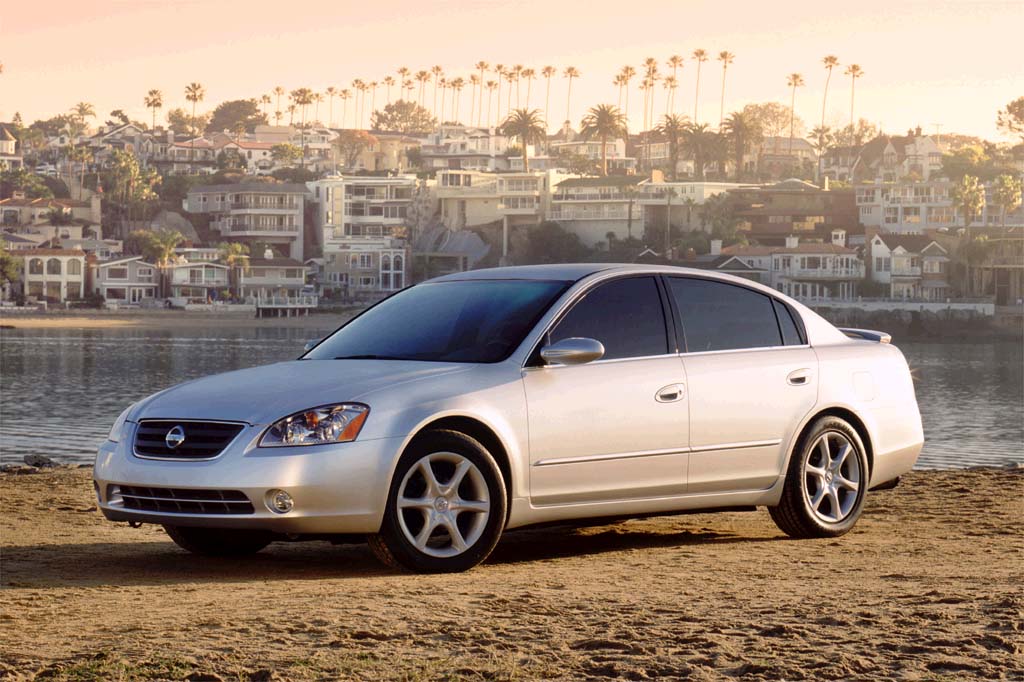
2002 Nissan Altima
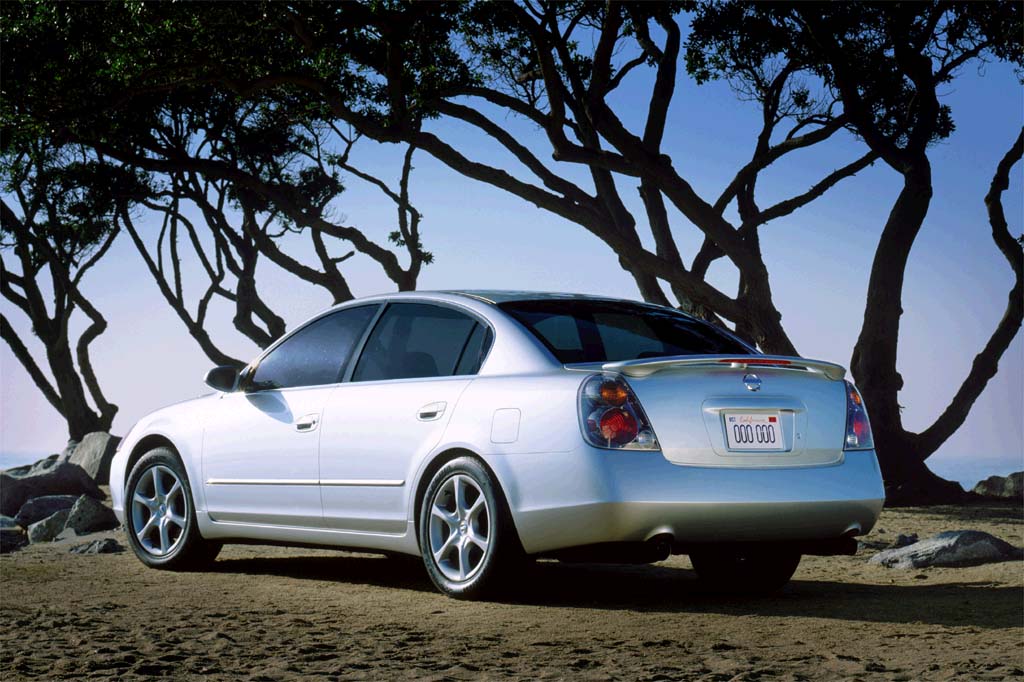
2002 Nissan Altima
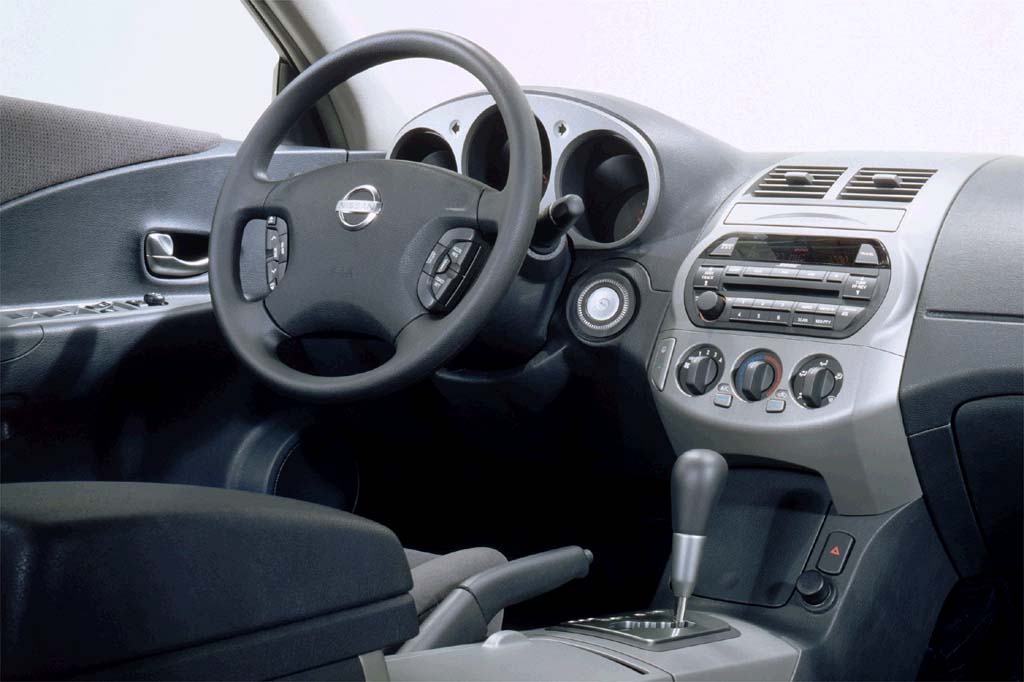
2002 Nissan Altima interior
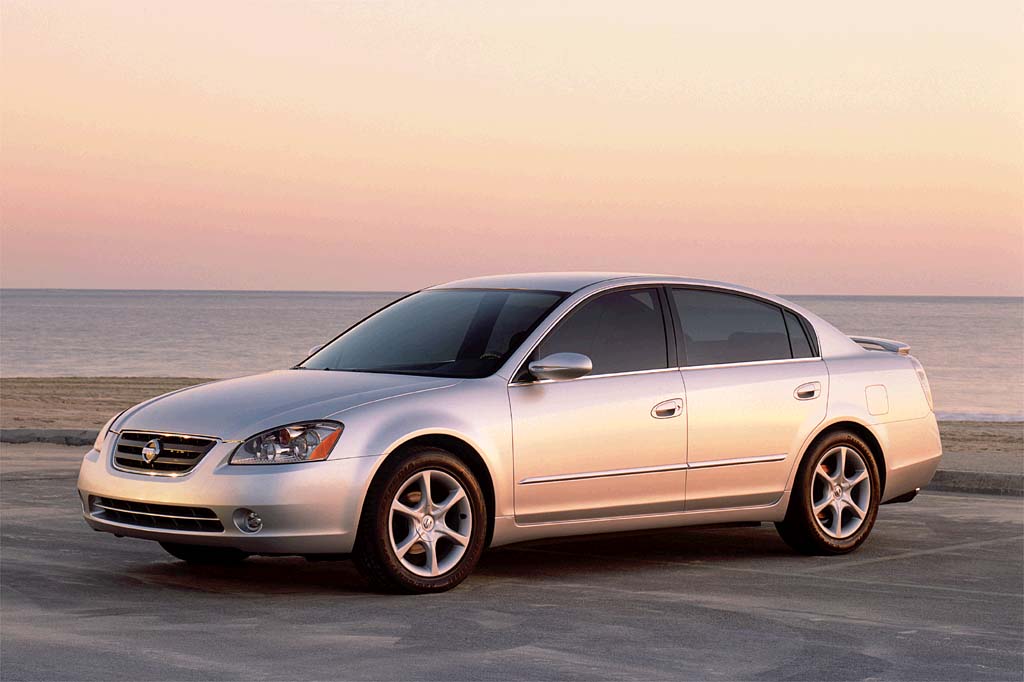
2002 Nissan Altima
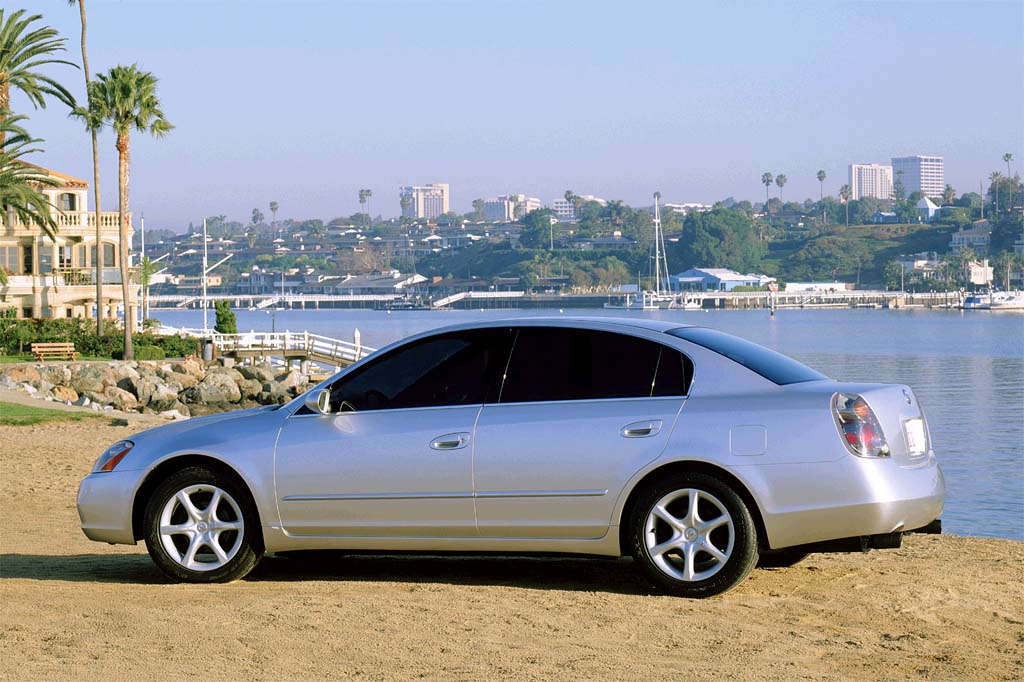
2002 Nissan Altima
| Pros: |
|
| Cons: |
|
Nissan finally got a genuine Camry/Accord alternative in the moderately priced midsize class. Strong on features for the money, the Altima gained a spunky personality, especially in sporty 3.5 SE guise. Not as refined or well-built as a Camry, Accord or Passat, the latest Altima is nevertheless strongly recommended. Four-cylinder models satisfy most needs.
Overview
Redesigned for 2002, Nissan’s second-rung front-drive sedan turned out to be slightly larger than the “flagship” Maxima, swelling from compact to midsize dimensions. Wheelbase grew by 7 inches, and the new Altima measured 5.7 inches longer overall.
For the first time, a V6 engine was available. Exclusive to the top-of-the-line 3.5 SE, the new 3.5-liter V6 produced 240 horsepower. Base, 2.5 S and 2.5 SL sedans used a 2.5-liter four-cylinder engine that generated 175 horsepower (20 more than the prior model’s four-cylinder). All models were offered with either a manual or automatic transmission. When equipped with automatic, the 3.5 SE qualified for optional traction control.
Four-wheel disc brakes were standard. All except the base model could have optional antilock braking, which came bundled with front torso side-impact airbags and curtain-style airbags. Sixteen-Inch wheels were standard, but the 3.5 SE rode on 17-inch rubber.
Leather upholstery was standard in the 2.5 SL sedan and optional for the 3.5 SE. All models had a tilt/telescoping steering wheel, split-folding rear seat, power windows, and power door locks. The 2.5 S added air conditioning, cruise control, power mirrors, remote keyless entry, and a CD player. Moving up to the 2.5 SL brought an eight-way power driver’s seat, steering-wheel radio controls, a Bose stereo with in-dash six-CD changer, and alloy wheels.
An upgraded suspension and foglamps were included on the 3.5 SE. Xenon high intensity-discharge headlights were optional on the 3.5 SE sedan. Altima rivals included the Honda Accord, Toyota Camry, and Volkswagen Passat.
Yearly Updates
| 2003 Altima Except for some trim and equipment shuffling, not much changed for 2003. The 2.5 SL sedan now came only with an automatic transmission and featured imitation-wood interior trim, as well as heated seats and mirrors. Other models had titanium-color interior accents. An expanded Sport Package for the 3.5 SE included a sunroof and rear spoiler, and a new Sport Plus Package added premium audio and xenon headlights. The SE’s Leather Package now included premium sound, a sunroof and heated seats, while a new SE Leather Sport Package added a rear spoiler and xenon lights. |
| 2004 Altima The Altima is unchanged for 2004. |
| 2005 Altima A sporty new top-line model joins the 2005 roster of Nissan’s best-selling vehicle. The sporty new SE-R model has a 260-hp V6. Manual and optional automatic transmissions are offered, but V6 now use a 5-speed automatic vs. 4-cyl models’ 4-speed. All models get revised interior trim for ’05, and a navigation system joins the options list. |
| 2006 Altima No significant changes for the 2006 Altima. |
